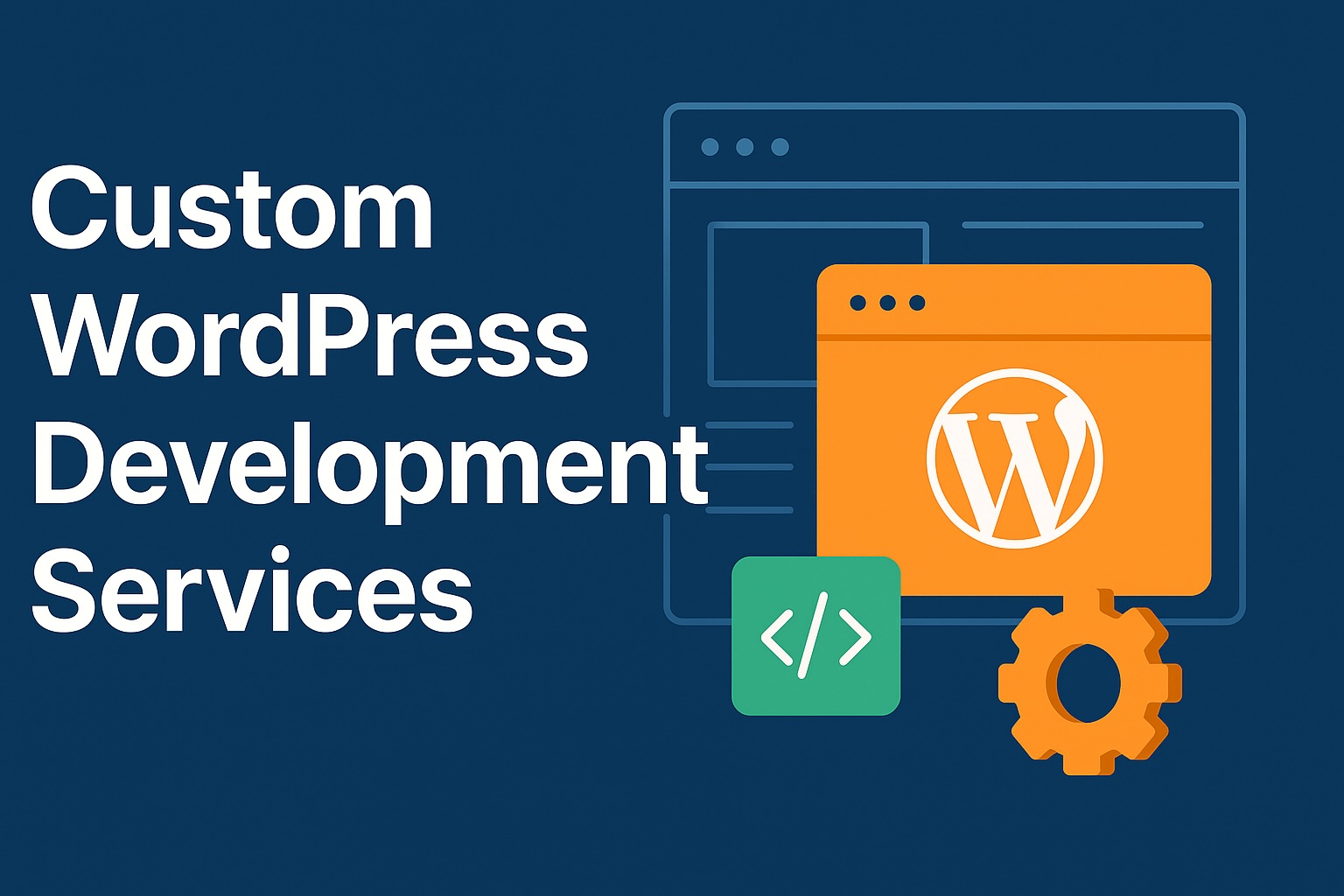Custom WordPress development gives you cleaner code, faster load times, better Core Web Vitals, and the freedom to build for your exact business workflows and integrations. It costs more upfront than an off-the-shelf theme, but the total cost of ownership is usually lower thanks to higher conversions, fewer plugin conflicts, and easier scaling. See also: Custom WordPress Development Services and our case studies.
Table of Contents
Why go custom instead of a marketplace theme?
Ready-made themes are great for quick starts, but they often ship with extra layouts, CSS, JS and plugin bundles you’ll never use. That bloat hurts performance and Core Web Vitals — a ranking and UX factor that measures loading, interactivity, and visual stability. Google treats Core Web Vitals as part of page experience for Search, and provides tools to monitor them in Search Console.
A lean, custom theme only includes what your site needs. That typically means:
- Fewer dependencies → less code to download/parse.
- Cleaner HTML → easier to pass CLS/LCP/INP thresholds.
- Tighter security surface → fewer third-party components to patch.
Modern tests repeatedly show that block-based builds (native Gutenberg / FSE) are lighter than page-builder stacks and make it easier to hit performance goals. Our take: Custom WordPress Development: Bespoke vs Themes
Business cases where custom WP wins
- Complex content models & workflowsCustom post types, editorial stages, and structured blocks built for your team (not the other way around).
- Performance-sensitive pagesLanding pages, catalogs, and high-traffic hubs benefit from minimal CSS/JS and optimized rendering. Field data shows WordPress can match or beat “static” setups when engineered well.
- Enterprise integrationsCRMs, CDPs, DAMs, SSO, translations, or custom APIs are simpler and safer with a controlled codebase (no theme lock-in). See WordPress VIP Partner.
- Security & complianceCustom permissions, audit trails, and update pipelines reduce risk versus plugin stacks. For current ecosystem risk levels, see our September 2025 security brief.
What’s included in “Custom WordPress Development Services”
Discovery & architecture
We map user journeys, data models (CPTs/taxonomies), and performance budgets tied to Core Web Vitals targets. Reference: Google’s CWV guidance for setting thresholds.
Design system & blocks
Reusable Gutenberg blocks and patterns aligned with your brand, built for editorial speed (no shortcodes).
Theme & plugin engineering
A lean block theme + just-enough plugins. We follow the WordPress Theme Handbook and block-theme file structure standards.
Performance & SEO
Code splitting, critical CSS, image optimization, caching/CDN, schema, and CWV monitoring via Search Console.
Security hardening
Principle of least privilege, update policy, Web Application Firewall support, and dependency scanning.
Content migration
From legacy themes/builders to blocks with parity checks. See our WordPress Migration Services.
Maintenance & SLAs
Proactive updates, backups, and incident response via Maintenance & Support or flexible WordPress Outsourcing.
Custom vs. Page Builders: performance reality
Independent comparisons and engineering write-ups consistently show lighter payloads and better CWV on Gutenberg/block themes compared to heavy page builders. If you must use a builder, expect extra tuning; if you can go native blocks/custom, you’re starting closer to the finish line.
For teams considering headless to push UX even further, there’s credible evidence that a headless WP stack can excel on CWV when done right — but complexity and cost rise; evaluate ROI case-by-case.
Further reading (external):
- rtCamp’s Gutenberg vs Elementor speed notes.
- Kinsta: WordPress vs Static HTML (updated May 2025).
- WPBeginner: How they made WordPress faster than static generators (case study).
Roadmap: how we deliver a custom WordPress build
- Audit & KPIs — baseline CWV, crawl health, and business metrics. (WordPress Audit)
- Information architecture — content model, block inventory, and patterns.
- Design system — tokens, components, accessibility checks.
- Build — block theme, performance budgets enforced in CI.
- Migration — content/layout parity, redirects, and QA.
- Go-live — cache/CDN rules, observability, rollback plan.
- Care plan — monthly patching, reviews, and experiments. (Maintenance & Support)
FAQ.
Don’t see your question? Drop us a message. We’re always happy to help.
Is custom WordPress worth the cost vs a $69 theme?
Often, yes. You trade a higher upfront build for lower long-term costs: fewer rewrites, better conversions from speed, and less time fighting plugins. For a strategic overview, see our deep-dive on ROI. Bespoke vs Themes
Will we pass Core Web Vitals?
No vendor can guarantee it, but a custom, block-first build gives you the best shot. We set budgets against Google’s thresholds and monitor via Search Console.
Do we need WordPress VIP?
Not always. For very high traffic, strict security/compliance, or complex integrations, VIP can be the right platform with enterprise SLAs. (WordPress VIP Partner)
Can you migrate us from a page builder?
Yes — we routinely move sites from WPBakery/Elementor to Gutenberg blocks with content parity and improved speed.
Recommended next steps
- See how we build: Custom WordPress Development Services
- Plan a migration: WordPress Migration Services
- Keep it fast & secure: Maintenance & Support
- Need flexible capacity? WordPress Outsourcing
- Proof first: Request a WordPress Audit or browse our case studies.
Sources & further reading
- Google Search Central — Core Web Vitals and page experience guidance.
- WordPress Developer Resources — Theme Handbook & block theme structure.
- rtCamp — Gutenberg vs Elementor performance notes.
- Kinsta — WordPress vs Static HTML (updated May 27, 2025).
- WPBeginner — Making WordPress faster than static generators (case study).







